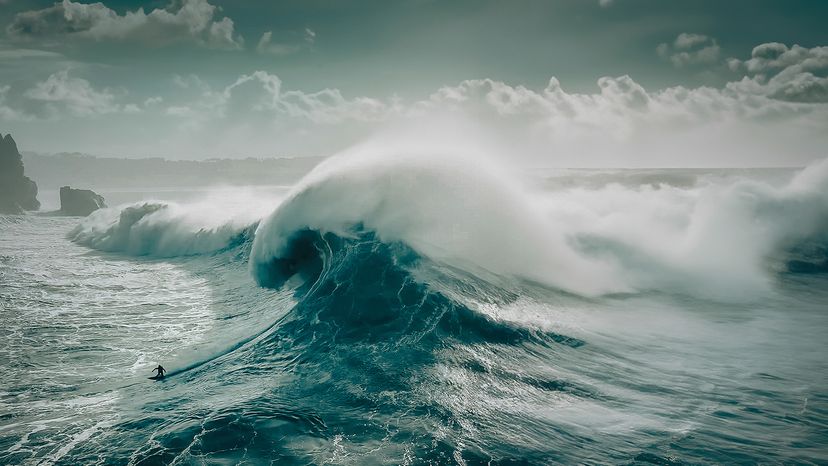As the quest for bigger and more thrilling waves continues, certain destinations around the world have become known for record-breaking swells. Each location has its unique geological and oceanographic conditions that produce some of the most extreme waves known to humankind.
From the legendary barrels of Tahiti to the ominous swells of Ireland's West Coast, these destinations challenge the limits of big wave surfing. Here are some of the most renowned spots where the giants of the ocean come to life.
1. Nazaré, Portugal
Nazaré, Portugal, is renowned for its monstrous waves, attracting big wave surfers from around the globe. The underwater Nazaré Canyon funnels swell energy directly to Praia do Norte, producing some of the most extreme waves ever surfed.
2. Pe'ahi /Jaws, Maui
Jaws, also known as Pe'ahi, is a mecca off the shores of Maui for surfers seeking the challenge of mammoth waves. Known for its powerful winter swells, Jaws generates towering walls of water that offer a thrilling ride for those skilled enough to navigate its massive breaks.
This destination is a cornerstone in the history of big wave surfing, regularly drawing a crowd to witness its spectacular swells.
3. Cortes Bank, California
Located off the coast of Southern California, Cortes Bank is an underwater seamount that produces some of the biggest waves on the planet.
This spot is unique due to its remote location and the fact that its waves break miles from shore over a submerged island, making it a dangerous yet irresistible challenge for surfers.
4. Mavericks, California
Mavericks in Northern California is infamous for its cold, shark-infested waters and massive waves that crash onto a shallow reef. This spot has become a storied venue in big wave surfing lore, hosting prestigious competitions that test the limits of even the most seasoned surfers.
5. Puerto Escondido, Mexico
Known as the "Mexican Pipeline," Puerto Escondido offers some of the most powerful and dangerous waves in the world. The beach break here is famed for its consistency and ferocity, attracting surfers eager to tackle its fast-moving tubes and thick, heavy barrels.
6. Waimea, Hawaii
Waimea Bay on Hawaii's North Shore is a historic site in the world of big wave surfing. It was one of the first spots where surfers began to challenge the big waves, and it continues to be a proving ground for those looking to make their mark in the sport. The iconic waves draw spectators and surfers alike each winter.
7. Teahupo'o, Tahiti
Teahupo'o in Tahiti is perhaps best known for its visually stunning yet dangerously shallow reef break. The waves here break so close to the surface that they form a thick, hollow tube, providing one of the most challenging rides available to big wave surfers — a true test of skill and nerve.
8. Cloudbreak, Fiji
Cloudbreak off the coast of Fiji is a world-class surf spot famous for its long, winding waves and pristine beauty. This reef break can hold swells that produce significant wave heights, offering a paradise for those looking to experience big wave surfing amidst the isolated splendor of the South Pacific.
9. Mullaghmore Head, Ireland
Mullaghmore Head along Ireland's West Coast is renowned for its monstrous winter swells that attract surfers from across the globe. The cold Atlantic waters here give rise to some of the most intimidating waves in Europe, driven by deep ocean swells that crash into its rugged coastline.
10. Belharra, France
Belharra, off the coast of France, is another European hotspot for giant waves. This deep water reef comes alive during the winter when conditions align to produce massive swells that can be seen and heard from miles away.
It’s a favorite challenge for big wave surfers in the region, adding to the allure of Europe's unlikely big wave surfing scene.
